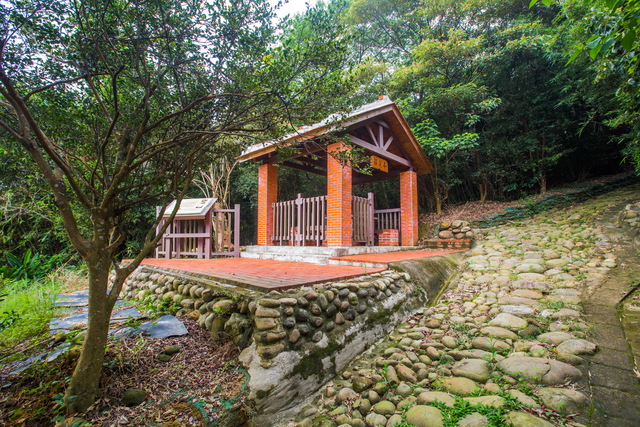Baojia Ancient Trail Introduction
Visiting ancient trails has always been a great way to understand local history. The Baojia Ancient Trail, which has a history of two hundred years, reveals through its name that it was developed during the Qing Dynasty. The Baojia Ancient Trail was previously known as the "Diao Dan Ancient Trail." Before the Lao Keng area in Yangmei had any external communication roads, it was a major route for porters traveling between Hsinchu Xinpu and Taoyuan Daxi, primarily transporting agricultural products such as persimmons, citrus fruits, tea, and camellia oil. The original length of the ancient trail was 20 kilometers, but it fell into disrepair for many years due to lack of maintenance. In 2014, residents of Yongning Village took half a year to restore 750 meters of the Baojia Ancient Trail by hand, following the traditional methods of their ancestors. The round pebbles on the trail were sourced locally from the Lao Keng Creek. The residents specifically used large stones paved in the center, with smaller stones on both sides for stabilization, maintaining a slope of less than 5%, thus recreating the historical scene of transporting goods and hoping to preserve local memories. Constructed using Hakka traditional methods, the ancient trail may take more time and effort than using concrete, but it has higher permeability, preventing damage to the habitat of native species and aiding in soil and water conservation, showcasing the residents' love for their land. Starting from the colorful mural wall at the entrance on Lao Zhuang Road, there are guided maps, tea-pouring pavilions, interpretive pavilions, and decorative stone carvings along the way, allowing travelers to experience Hakka culture. The flat ancient trail is quite suitable for family outings. Visiting this tranquil path, one can feel the lush greenery of tea gardens and camellia oil trees, uplifting one's mood. With the arrival of the May Tung Blossom season, it attracts many flower viewers to witness the stunning sight of blossoms on the trees. The rest pavilion at a higher point along the trail offers an excellent view, allowing visitors to gaze at the Yangsheng Golf Course and soak in the pure white romance of the woodland scenery.








































